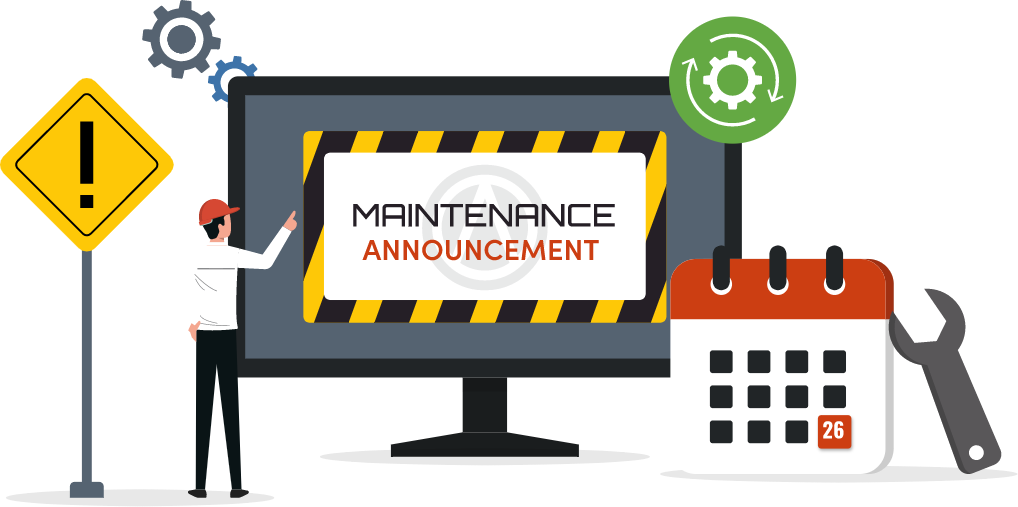How do I know if my restaurant menu is priced correctly?
A good sign is when your food cost percentage stays within your target range (typically 28-35%) and customers keep ordering without hesitation. If sales drop or margins tighten, it's time to review your prices and costs.
How to Price Your Restaurant Menu for Maximum Profit
Overview
Setting prices on your restaurant menu takes more than just guessing or copying what others charge. It's about finding the right balance between making a profit and keeping customers happy. If prices are too high, people may not return. If they're too low, your profits shrink, and you struggle to cover rising costs.
Every item on your menu has a cost behind it - ingredients, labor, and overhead. But what customers pay also depends on how much value they think they're getting. A well-priced dish feels fair, tastes great, and fits the experience you promise.
Today's market makes pricing even harder. Food costs keep changing, labor is more expensive, and guests are paying closer attention to value. That's why menu pricing should be based on data, not guesswork. By understanding your costs, portion sizes, and customer perception, you can set prices that make sense for both your guests and your bottom line.
The Core Components of Menu Pricing

Before setting prices, it's important to know what actually shapes them. Three main elements affect every menu price - food cost, overhead expenses, and perceived value. When you understand how these work together, you can set prices that protect your profit while staying fair to customers.
1. Food Cost Percentage (COGS) - This is the total cost of ingredients used to make a dish. If a burger costs you $4 to make and you sell it for $12, your food cost percentage is about 33%. Most restaurants aim to keep this between 28% and 35%, depending on their concept. Tracking this helps you see which items earn you more and which might be dragging your profits down.
2. Labor and Overhead Costs - Your prices also need to cover the time and effort it takes to prepare each item, plus rent, utilities, and other expenses. Ignoring these costs can make even a "profitable" item lose money once all bills are factored in.
3. Perceived Value - This is how much customers think a dish is worth. It's shaped by presentation, portion size, and your restaurant's atmosphere. A simple pasta can sell for $10 or $18 depending on how it's presented and the dining experience around it.
Smart menu pricing happens when these three parts are balanced. You're not just covering your costs - you're creating value that customers recognize and are willing to pay for.
Calculating Food Costs and Profit Margins
Before you can price your menu correctly, you need to know exactly what each dish costs to make. This starts with calculating your food cost - the total price of all ingredients that go into a menu item. For example, if your chicken sandwich uses $2.50 worth of ingredients, that's your food cost for that dish. Once you know that, you can decide how much to charge to reach your target profit margin.
A simple way to measure this is with the formula
Food Cost % = (Cost of Ingredients / Menu Price) x 100
If a dish costs $3 to make and sells for $12, the food cost percentage is 25%. That means you're spending 25 cents for every dollar earned. Most restaurants aim for a food cost between 28% and 35%, depending on their style. Quick-service restaurants might run lower, while fine dining allows for higher percentages due to premium ingredients.
You can also reverse the formula to find your ideal selling price
Menu Price = Food Cost / Target Food Cost %
For instance, if your dish costs $4 to make and you want a 30% food cost, divide $4 by 0.30 - giving you a price of about $13.33.
This simple math helps ensure your prices cover food expenses and leave room for labor, rent, and profit. Regularly checking these numbers keeps your pricing accurate, even when ingredient costs change. Over time, this approach builds consistency and stronger profit margins.
Portion Size and Its Direct Impact on Profitability
Portion size plays a major role in how much profit you make and how your guests view the value of their meal. Even small inconsistencies in portioning can add up to big losses over time. If one cook serves a slightly larger portion than another, your food costs rise without your customers even realizing it. Keeping portions consistent protects both your margins and your brand's reputation.
The first step is to standardize recipes. Every dish should have a clear portion guide that includes exact weights or measurements for each ingredient. For example, if your pasta entree is listed as 6 ounces of noodles, make sure it's always that amount - not a heaping plate one day and a smaller scoop the next. Using portioning tools like ladles, scoops, and scales helps staff stay consistent.
From the customer's side, portion size directly affects perceived value. If portions are too small, guests may feel they're not getting their money's worth. If portions are too large, food waste increases, and your profit shrinks. The key is balance - a serving that feels satisfying but still fits within your target food cost.
Monitoring portion control also helps with inventory accuracy. When each dish uses the same amount of product, you can forecast supply needs more precisely, reduce waste, and avoid surprise shortages.
Using Psychology to Influence Price Perception

The way prices are displayed, grouped, or designed can shape what people buy and how much they spend. Smart restaurants use simple psychological tricks to increase sales without raising costs.
Here are the key points to understand -
1. Charm Pricing - Ending prices in ".95" or ".99" makes them feel lower to customers. For example, $9.95 seems cheaper than $10, even though the difference is small. This works best in casual and quick-service restaurants.
2. Whole Numbers for Upscale Appeal - High-end restaurants often skip the cents and list rounded numbers like "24" instead of "$24.00." This cleaner look gives a sense of quality and confidence.
3. Price Anchoring - Listing one high-priced item can make others seem more affordable. A $45 steak next to a $28 entree makes the $28 option look like a better deal.
4. Menu Placement - Customers' eyes usually go to the top-right corner first. That's the best place for your high-margin or signature items.
5. Remove the Dollar Signs - Removing "$" symbols keeps guests focused on the meal, not the money. It reduces price hesitation and improves the overall dining experience.
When done correctly, these techniques don't manipulate customers - they simply help you highlight value and guide choices naturally.
Aligning Prices with Brand and Market Positioning
Your menu prices should always match your restaurant's identity and the customers you want to attract. Pricing that doesn't align with your brand can confuse guests and hurt sales. For example, if you run a family-friendly diner, guests expect affordable, hearty meals - not fine dining prices. On the other hand, a high-end steakhouse charging too little might make customers doubt its quality.
The goal is to set prices that fit both your concept and your market. Here are the key points to guide your approach -
1. Know Your Target Audience - Understand who your customers are and what they value. Are they looking for quick, affordable meals or a premium dining experience? Pricing should reflect their spending habits and expectations.
2. Match Prices to Brand Image - Every restaurant tells a story - through its food, atmosphere, and service. Your pricing should support that story. A casual cafe can use charm pricing like $9.99, while a luxury restaurant should use simple, clean numbers like $28 to reinforce elegance.
3. Research the Local Market - Study nearby competitors to see where your restaurant fits. If your prices are far above or below the local range, you risk losing customers or undercutting your value.
4. Adjust Based on Perception, Not Just Cost - Two dishes with the same ingredients can be priced differently based on presentation, ambiance, and experience. The goal is not just to cover costs - but to charge what your brand feels worth.
Aligning price with brand helps customers understand your value instantly, building trust and loyalty over time.
Monitoring, Testing, and Adjusting
Menu pricing isn't a one-time task - it's an ongoing process. Ingredient costs, labor expenses, and customer preferences change over time, which means your prices need regular review. Many restaurants lose money not because of poor food or service, but because they fail to update their pricing when costs rise. Consistent monitoring helps you stay profitable and competitive without surprising customers.
Here are the key points to focus on when reviewing and adjusting your menu prices -
1. Track Ingredient Costs Monthly - Keep an eye on supplier invoices and compare them to your original recipe costs. If a key ingredient increases by 10% or more, you may need to adjust that item's price or portion size to maintain your margins.
2. Use Sales and Profit Reports - Your POS system holds valuable data. Look at item-level sales and contribution margins to see which dishes are most profitable and which are dragging your numbers down. If a popular dish has low profit, consider a small price increase - even $0.50 can make a big difference.
3. Gather Customer Feedback - Pay attention to guest reactions when prices change. If people continue ordering without hesitation, you've likely priced correctly. If sales drop sharply, review your changes and adjust.
4. Test Before Fully Committing - Try new prices on a few items or in select locations before applying them across your entire menu. This approach helps you learn what works without risking overall revenue.
Regular menu reviews turn pricing into a controlled, data-driven process - not a guessing game. By staying proactive, you protect your profit margins and ensure your pricing always reflects real costs and market conditions.
Final Thoughts
Profitable menu pricing is both a science and an ongoing commitment. It's about finding the right balance between what your food costs, what your customers value, and how your brand is positioned in the market. When you understand your costs, control your portions, and use smart pricing psychology, you build a menu that keeps guests satisfied and your business thriving.
The key is consistency. Reviewing ingredient costs, monitoring performance data, and testing new prices help you stay ahead of changes in the market. Even a small price adjustment can protect your profit margins when done strategically. Remember - the goal isn't just to make money today; it's to create a menu that supports your restaurant's long-term success.
Profitable pricing doesn't happen by chance. It happens when you rely on real numbers, clear data, and strong operational systems to guide your decisions.
Power Smarter Pricing with Altametrics
Menu pricing becomes easier when your data works for you. Altametrics helps restaurant owners simplify cost tracking, monitor real-time sales performance, and forecast profits with accuracy. From recipe costing to labor analytics, Altametrics connects all your operational tools in one platform - giving you the insights you need to price confidently and grow sustainably.
Start building a smarter, more profitable restaurant today by clicking "Book a Demo" below.
Must-Read Content














